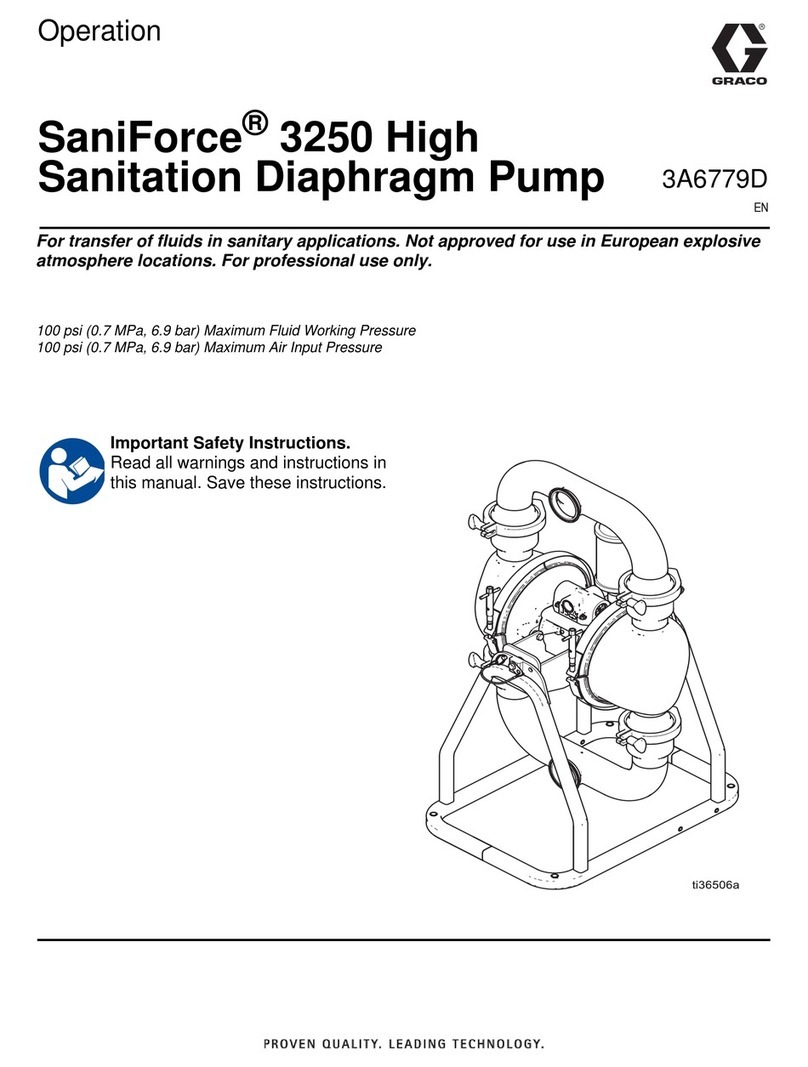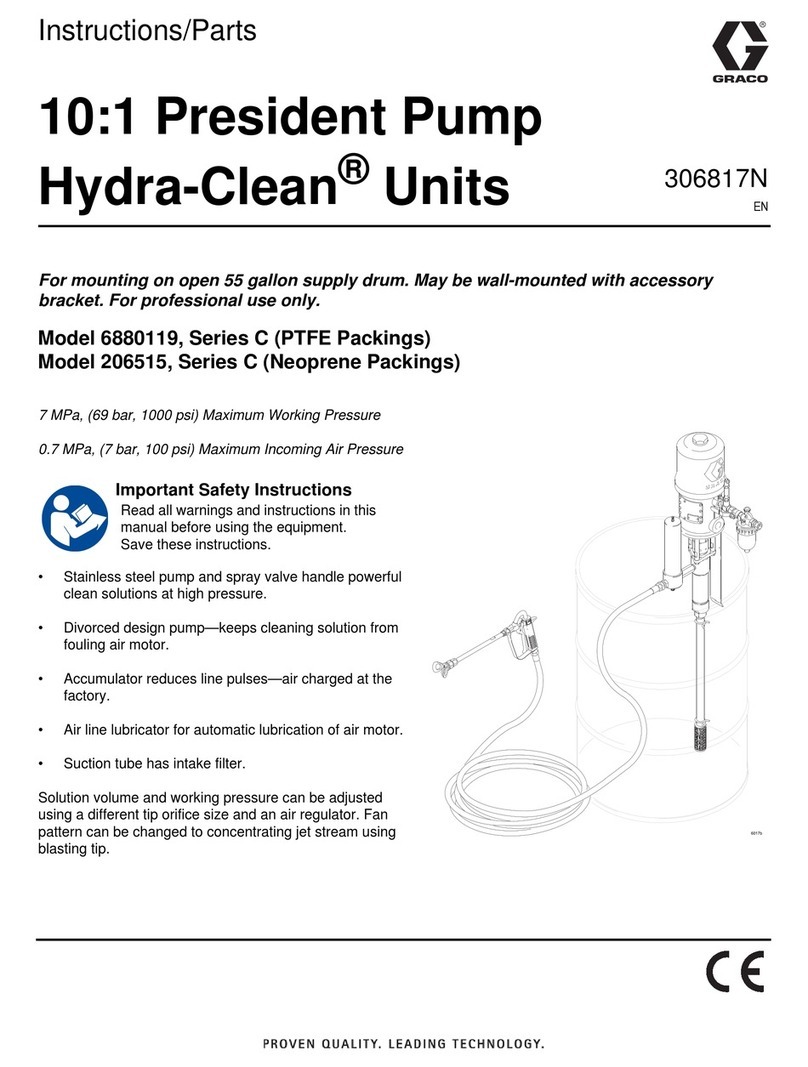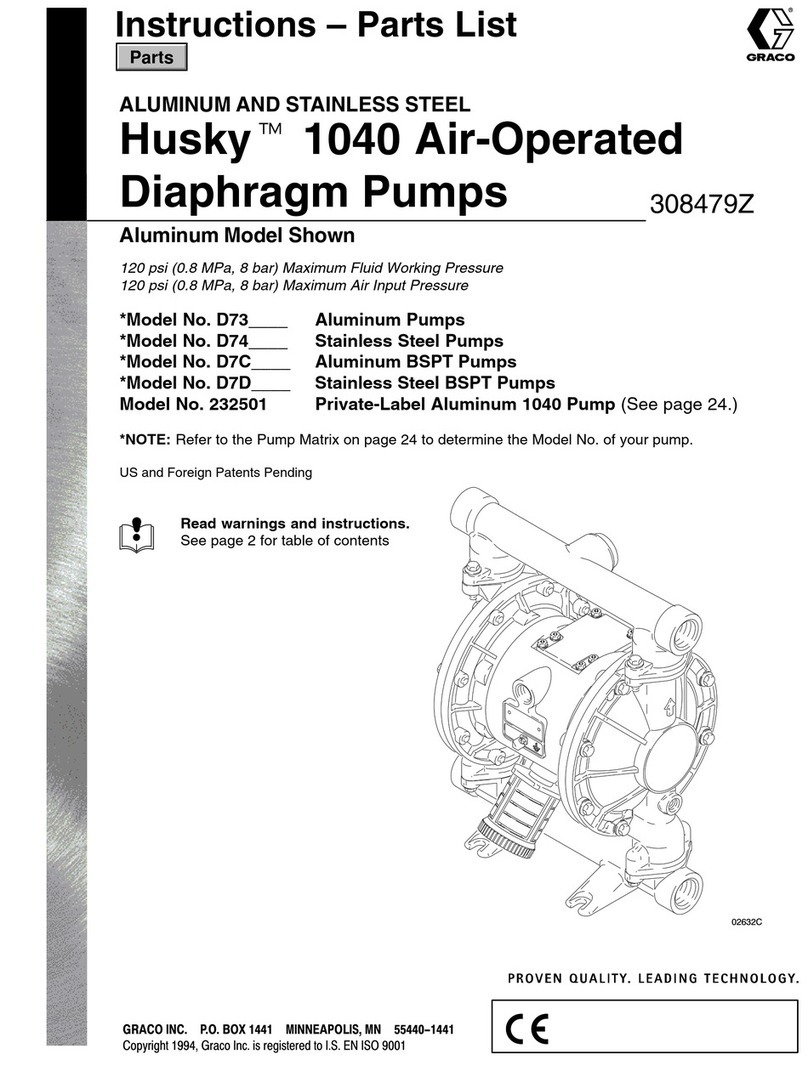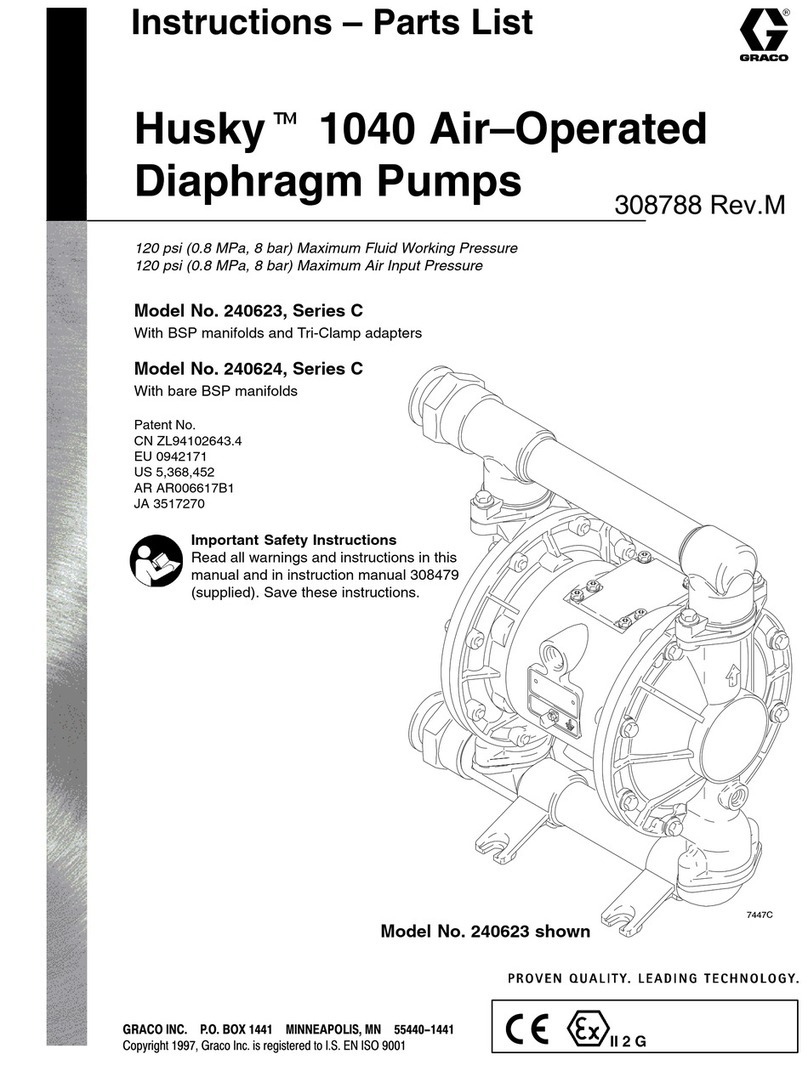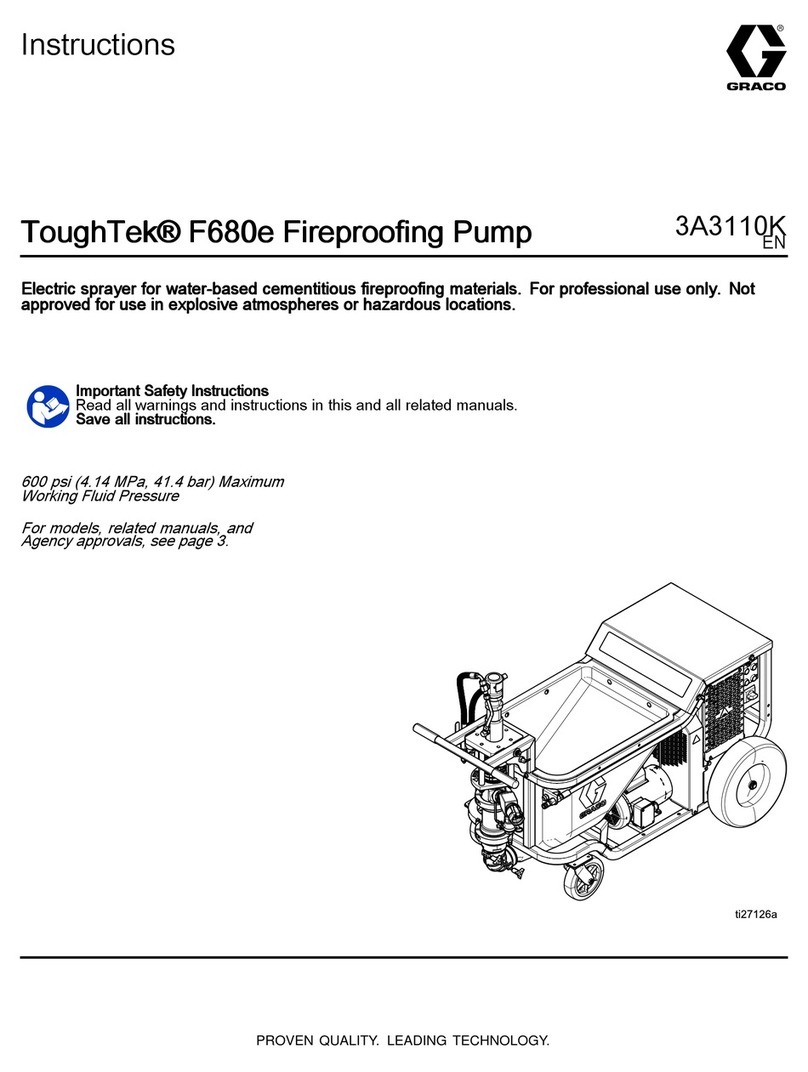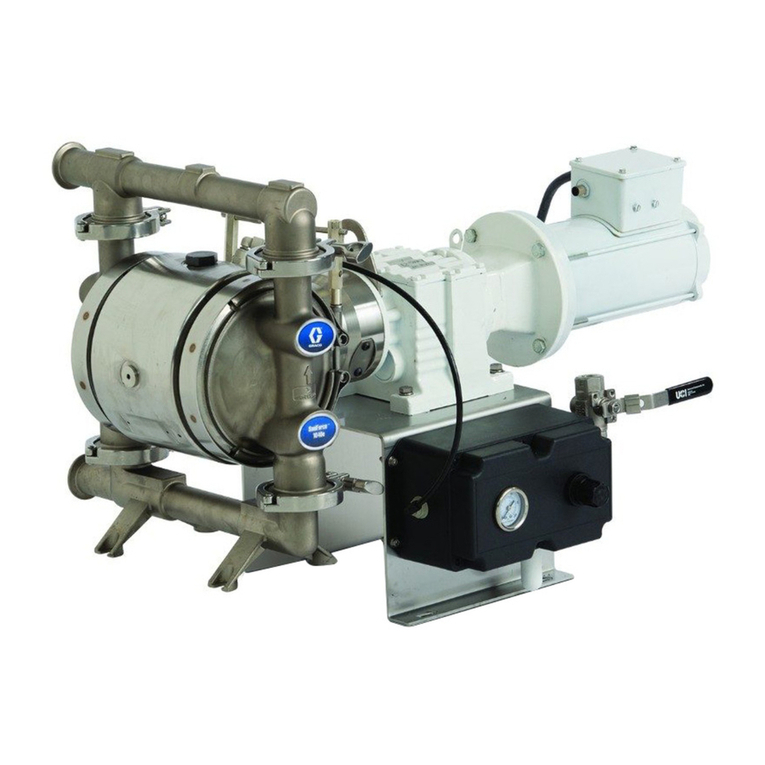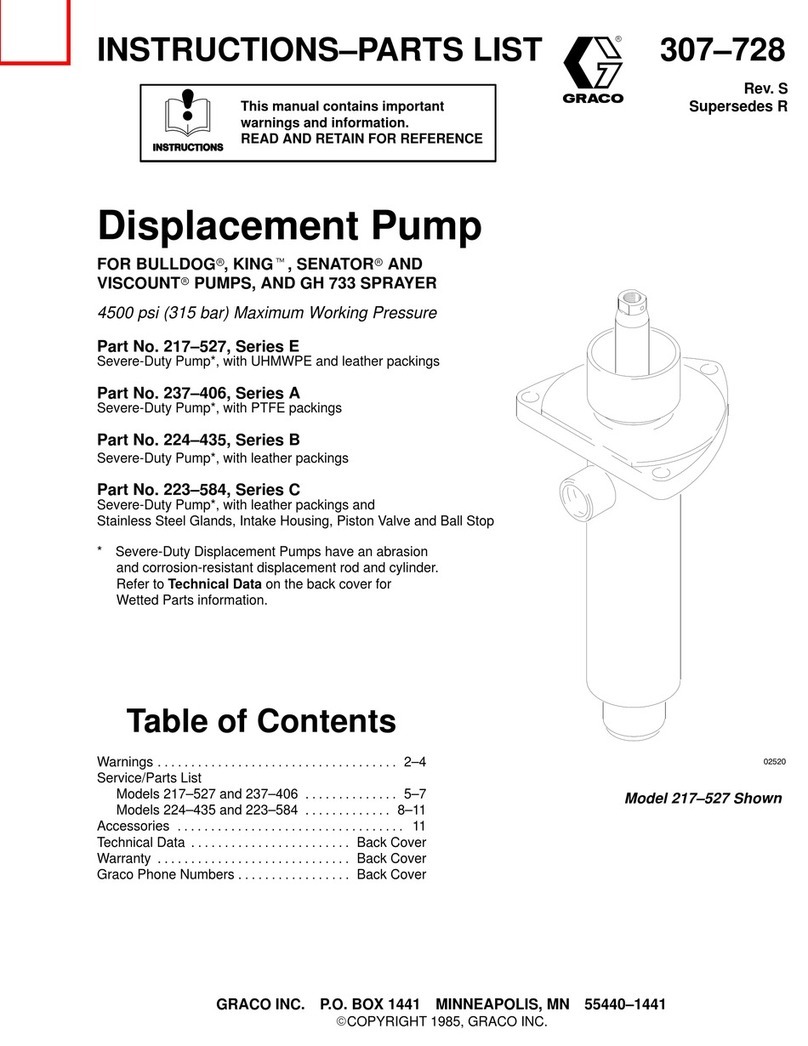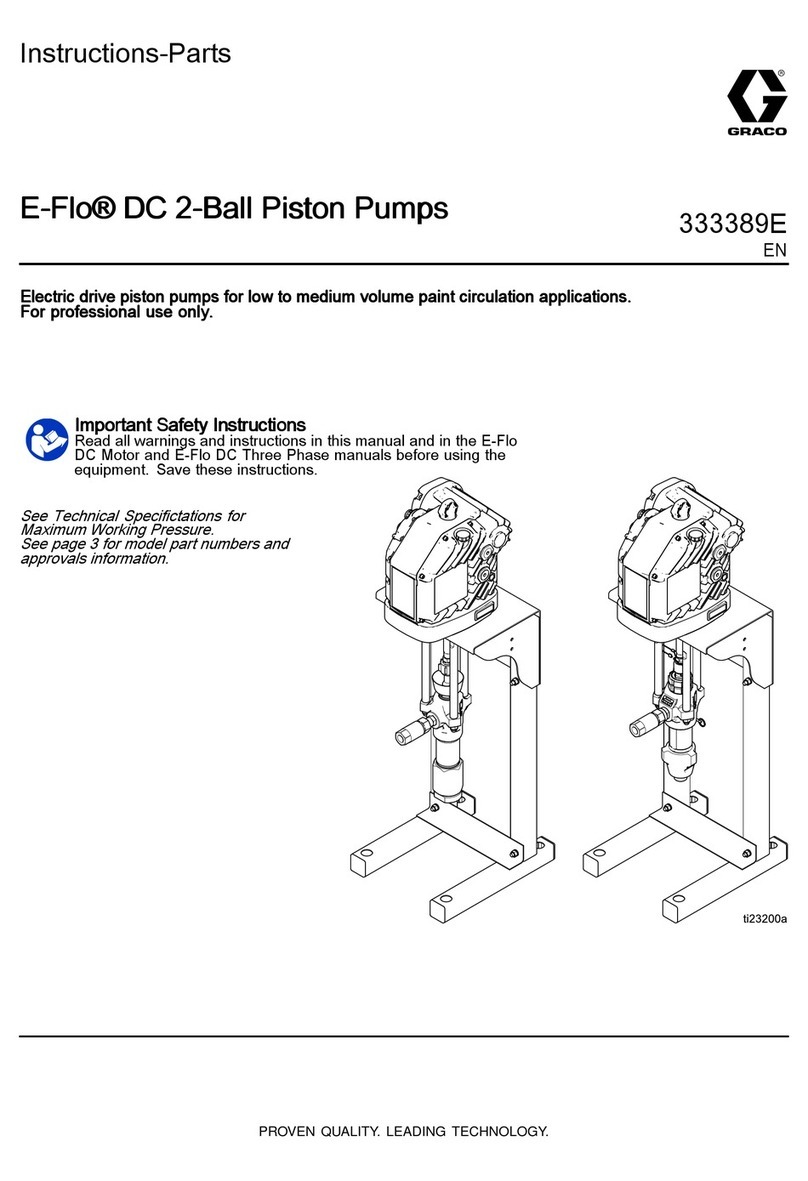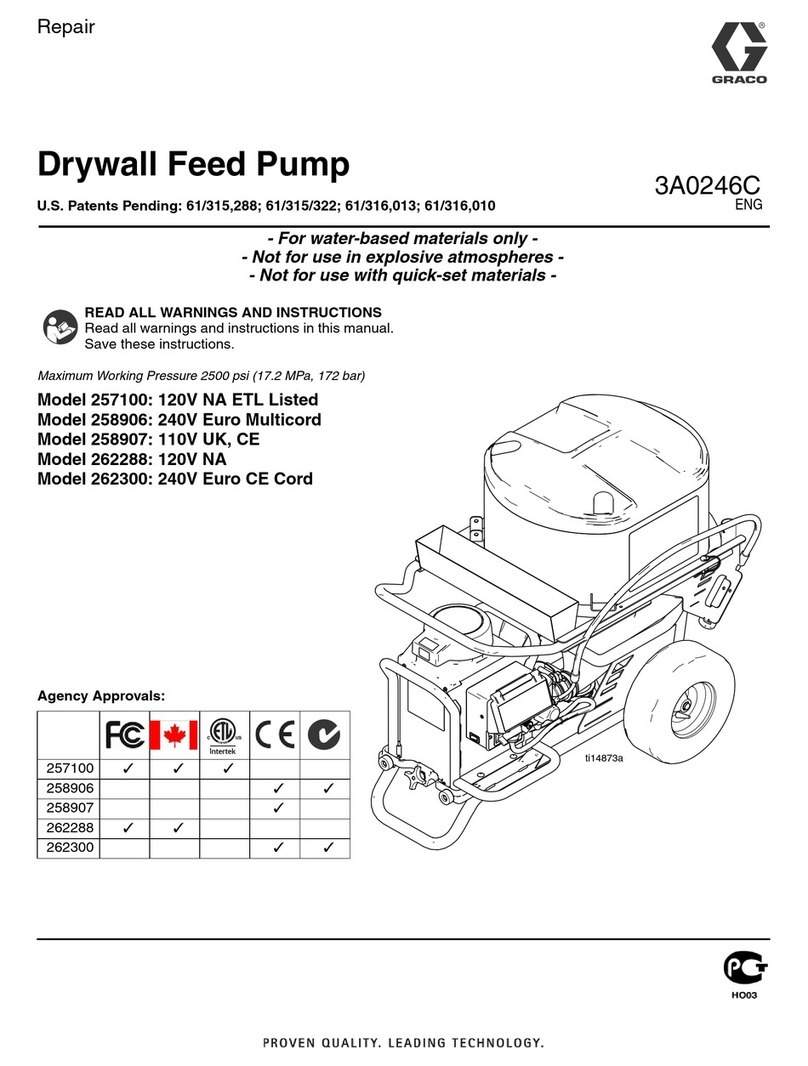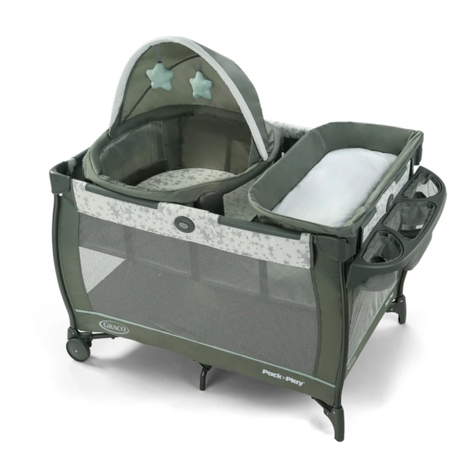
HIGH PRESSURE SPRAY CAN CAUSE SERIOUS INJURY.
FOR PROFESSIONAL USE ONLY. OBSERVE ALL
WARNINGS.
Read
and
understand
all
instruction
manuals
before
operating
equipment.
FLUID
INJECTION
HAZARD
General Safety
This equipment generates very high fluid pressure. Spray from
the gun, leaks or ruptured components can inject fluid
through your skin and into your body and cause extremely
serious bodily injury, including'the need for amputation. Also,
fluid injected or splashed into the eyes or
on
the skin can
cause serious damage.
NEVER point the spray gun
at
anyone or
at
any pan of the
body. NEVER put hand
or
fingers over the spray tip.
spraying.
ALWAYS have the tip guard in place
on
the spray gun when
before cleaning or removing the spray tip
or
servicing any
ALWAYS follow the Pressure Relief Procedure, below,
system equipment.
NEVER try to stop or deflect leaks with your hand or body.
before each use.
Be
sure equipment safety devices are operating properly
Medical Alert-Airless Spray
Wounds
MEDICAL CARE AT ONCE.
DO
NOT TREAT AS A
If any fluid appears to penetrate your skin, get EMERGENCY
SIMPLE CUT. Tell the doctor exactly what fluid was injected.
jury.
It
Is
Important to treat the Injury surgically
ss
soon
Note
to
Physician:
Injection
in
the skin is a traumatic
in-
es
possible.
Do
not delay treatment to research toxicity.
directly into the blood stream. Consultation with a plastic
Tomciiy
is a concern with some exotic coatings injected
surgeon or reconstructive hand surgeon
may
be advisable.
Spray
Gun
Safety Devices
Be
sure
all
gun safety devices are operating properly before
each
use.
Do
not remove or modify any pan of the
gun;
this
can cause
a
malfunction and result in serious bodily injury.
Sefew Latch
Whenever you stop spraying,
even
for
a
moment, always
set
the gun safety latch in the closed or "safe" position, making
the gun inoperative. Failure to
set
the safetv latch
can
result in
accidental triggering of the gun.
Diffuser
The gun diffuser breaks up spray and reduces the risk
of
fluid
injection when the tip
is
not instelled. Check diffuser operation
regularly. Follow the Preeeure
Relief
Procedure, to the
right, then remove the spray tip. Aim the gun into
a
grounded
metal pail. holding the gun firmly to the pall. Using the
1-
possible pressure, trigger the gun. If the fluid emitted is not
diffused into an irregular stream, replace the diffuser im-
mediately.
Tip
Guard
ALWAYS have the tip guard in place
on
the spray gun while
spraying. The tip guard
alerts
you to the fluid injection hazard
and helps reduce,
but
does not prevent, the risk of acciden-
tally placing your fingers or any pan of your body close to the
spray tip.
Trig
er Guard
NEVfR operate the gun with the trigger guard removed. The
trigger guard reduces the risk of accidentally triggering the
gun
if
it
is
dropped or bumped.
Spray
Tip
Safety
the spray tip
clogs
while spraying, engage the gun safety latch
Use extreme caution when cleaning or changing spray tips. If
cedure below, and then remove the spray tip to clean
it.
immediately. ALWAYS follow the Pressure Relief Pro-
fully relieved and the gun safety latch is engaged.
NEVER wipe off build-up around the spray tip until pressure
is
Pressure Relief Procedure
To reduce the risk of serious bodily injury, including fluid injec-
tion, splashing in the eyes or
on
the skin, or injury from mov-
ing parts, always follow this procedure whenever you shut
off
the pump, when checking or servicing any pan of the spray
system, when installing, cleaning or changing spray tips, and
whenever you stop spraying.
2.
Shut off the air to the pump.
1.
Engage the gun safety latch.
3.
Close the bleed-type master air valve (required in your
4:
Disengage the gun safety latch.
5.
Hold
a
metal pan of the gun firmly to the side of
a
ground-
6.
Engage the
gun
safety latch.
ed
metal pail, and trigger the gun to relieve pressure.
7.
Open'the drain valve (required in your system], having
a
grounded metal container ready to catch the drainage.
8.
Leave the drain
valve
open until you are ready to spray
again.
If
YOU
suspect that
the
spray
tip
or hose is completely dogged,
stem above. VERY SLOWLY loosen the
tio
ouard
retainina
or that pressure has not been fully relieved after following the
systaml.
~~~ ~~ ~
nui or hose'end~coupling and relieve pressure gradually, the;
loosen completely. Now clear the tip
or
hose.
."~
EQU/PM€MT
MISUSE
HAZARD
General
Safety
Any misuse of the spray equipment or accessories, such
as
System
Pressure
The
X1
pump develops
36ao
psi
1250
bed MAXIMUM
overpressurizing, modifying pans, using incompatible
chemicals and fluids, or using worn or damaged parts, can WORKING PR€SSUR€at
120
psi
(8
barl air pressure. NEVER
exceed
120
psi
18
barl air supply pressure to the pump.
cause them to rupture and result in fluid injection or other
serious bodily injury, fire, explosion or property damage.
withstand the maximum working pressure of the pump.
DO
Be
sure
all
system components and accessories are rated to
NEVER alter or modify any pan of this equipment; doing
sa
could
cause
it
to malfunction. NOT exceed the maximum working pressure of any compo-
nent or accessory
used
in your system.
CHECK
all
spray equipment regularly and repair or replace
worn or damaged parts immediately. Fluid Compatibility
patible with the wettad parts shown in the Technicel Data on
BE SURE that
ell
fluids and solvents used are chemically com-
regarding the use of protective clothing and equipment.
Read and follow the fluid and solvent manufacturer's literature the back cover. Always read the manufacturer's literature
before using fluid or solvent in this pump.
2'
306-981
